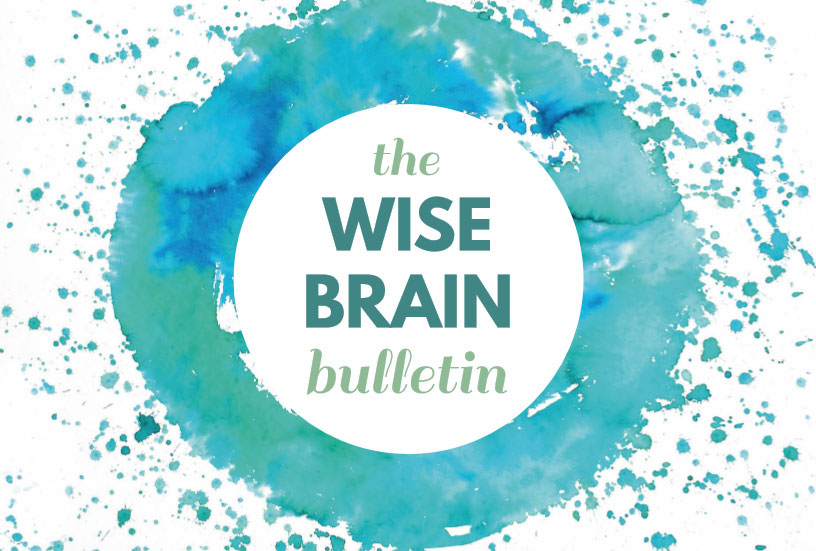News and Tools for
Happiness, Love, and Wisdom
Volume 17,6• December 2023
In This Issue
Courage
© 2023 Oren Jay Sofer
From Your Heart Was Made for This: Contemplative Practices for Meeting a World in Crisis with Courage, Integrity, and Love © 2023 by Oren Jay Sofer. Reprinted in arrangement with Shambhala Publications, Inc. Boulder, CO. www.shambhala.com
When my wife Evan told me that she wanted to have a child, I hesitated to say yes. I worried about the disintegration of public institutions, the fraying of the social fabric, and the future habitability of our planet. Yet I sensed the possibilities of her invitation and had faith in our ability to contribute through child-rearing. Having chosen to bring new life into this world, I wondered if it’s always taken this much courage, or if the trials ahead have taken natural, protective parental fear to a new level. Before our son was born, I had a palpable feeling of standing on the edge of a cliff, not knowing what was coming. It takes courage to stand on that edge with awareness, open to everything.
Looking ahead, I see courage as essential in meeting our collective challenges. Courage takes many forms: the courage of the activist, standing in the way of systems of domination and extraction; the courage of the teacher, elected official, or scientist, speaking unpopular truths to power; the courage of the family member, swimming against the stream of business-as-usual life choices that don’t align with their integrity.
A great myth about courage is that it means not feeling afraid. But in fact, far from being the absence of fear, courage is the willingness to be present and vulnerable, meeting what is happening with an open heart, in spite of fear. Sometimes I feel terrified about having a child, not because I’m worried about the inevitable mistakes I will make but because I fear the intensity of grief and pain that I know accompanies any depth of love and joy in this life. They are inseparable companions, as necessary as up and down, left and right, and it takes courage to acknowledge that.
It takes courage to love—which is to risk loss. It takes courage to grieve, to open to pain. To find the will and resources to transform society, we must come to terms with the grief of loss: the clear-cut forests, the polluted rivers, the dried lakes, the extinct species that will never reappear on this miraculous planet. When I read about increasing teen depression and suicide and their causes—climate despair, social media addiction, anxiety, and more—my heart contracts in fear for how I will parent our son who will need to find his own response to the heartrending changes we are living through.
When I was a child, my mother often brought me with her to run errands. I enjoyed those little trips. It was a cherished opportunity to spend time together and for me to help with small tasks. I remember once, however, waking up in the passenger seat with Mom nowhere to be found. At first, I just felt confused. But the longer I was alone the more frightened I became.
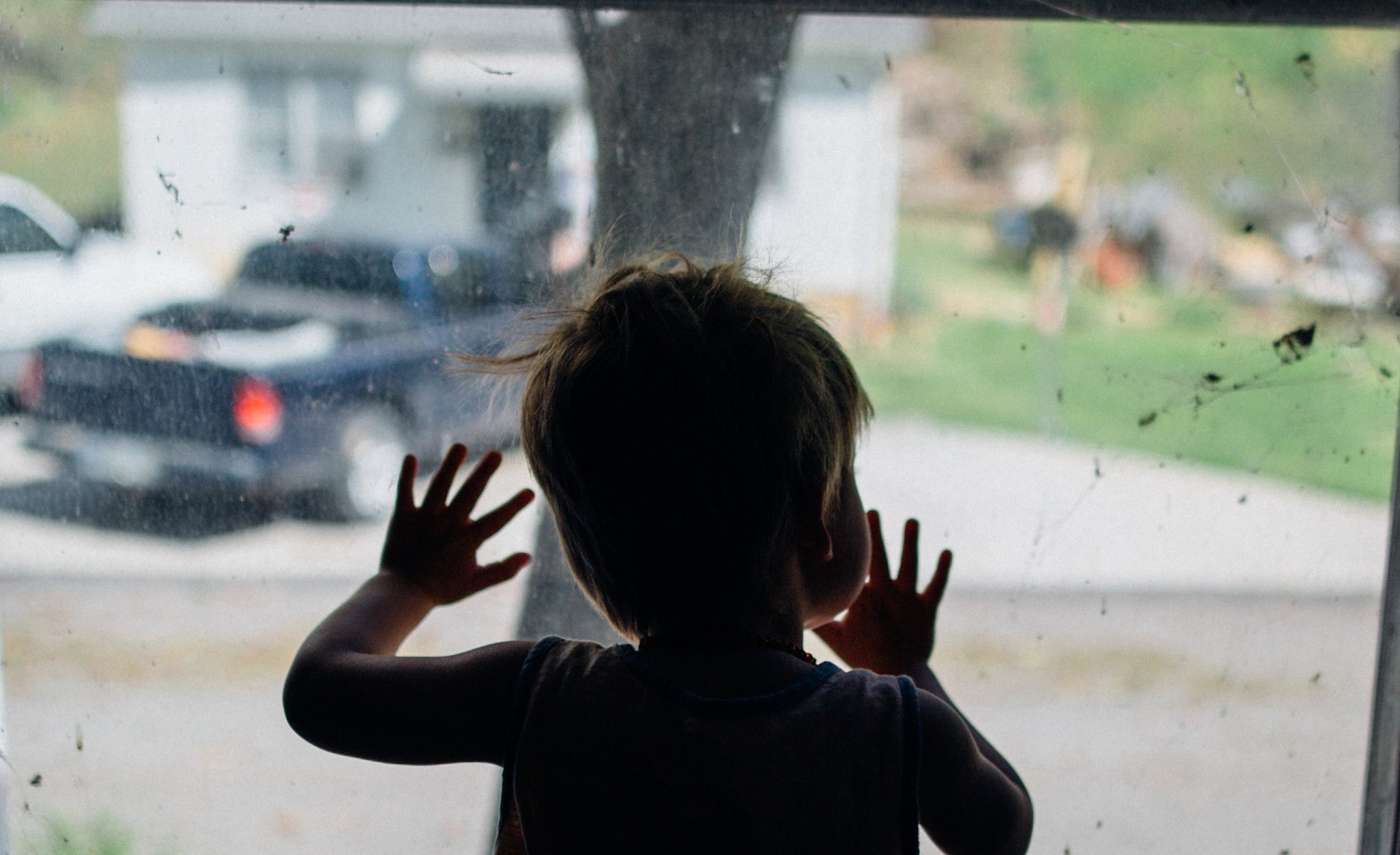
Finally, I panicked and began to wail. Where’s Mom? Why did she leave? What’s happening? I was overwhelmed by the shock of being alone and the fearful stories my mind created to make sense of things, and too young to recognize what had happened: I’d fallen asleep while we were driving, and rather than rouse her sleeping son, my mom had dashed into the store for a few minutes. Of course, she returned and comforted me, and all was well. But before she did, I was in sheer terror.
Fear is a natural response to danger. We all received a lesson in fear and courage when the COVID-19 pandemic hit. Something as simple as grocery shopping became frightening, especially for those at higher risk or with vulnerable loved ones. In the midst of danger, it’s natural to be on high alert. From an evolutionary perspective, the fight-flight-freeze response makes complete sense. Movies and television often valorize a kind of primal courage: the heroic counterattack against a threat. When there’s pain, hardship, or discomfort, our hardwired tendencies are to resist: to fight it, to look for someone to blame, to turn and run the other way, or to shut off altogether. These adaptive responses can keep us alive in extreme circumstances.
But when our minds amplify a threat or simply imagine one, that evolutionary mechanism makes things worse, adding spin to an already tense situation. There’s a difference between feeling afraid and panicking or freezing. Discerning this difference is where contemplative practice shines. It takes courage to be with things as they are, to turn toward and be with the truth of each moment—pleasant or painful. Contemplative practice opens the door to a more versatile, morally nuanced courage in meeting what is.
For courage is protective. The first step toward not succumbing to panic is recognizing what’s happening (a function of mindfulness) and stepping back (a function of wisdom). Courage begins with one moment of awareness and the possibility of taking a pause. We can ground ourselves in the present moment, breathe, and bear with the discomfort of fear without letting it take over.
The word courage comes from the Latin word cor, for heart. It takes heart to meet life on its own terms, rather than through the illusions of safety, comfort, and predictability that we crave as humans. It takes a heart full of courage to face the truth and act in alignment with our values, just as it takes tremendous courage to look squarely into the horrific, violent history of racism, terror, land theft, genocide, and broken treaties in the United States.
History offers countless examples of humans mustering courage in extraordinary and deeply inspiring ways, often placing their bodies on the line to confront unjust systems. The unrelenting activism of Mamie Till-Mobley forced the nation to confront the brutal murder of her son, Emmett Till, in 1955—often recognized as a galvanizing event in the civil rights movement. In 1957 the Little Rock Nine needed protection from the federalized National Guard and the US Army as they entered Little Rock Central High School, and three years later six-year-old Ruby Bridges was escorted by federal marshals as she walked into an all-white school in New Orleans. The Tiananmen Square protesters for democracy in 1989 in China, the water protectors encamped at the Standing RockSioux reservation beginning in 2016, and the prodemocracy activists who took to the streets in Hong Kong beginning in 2019: all embodied immense courage.
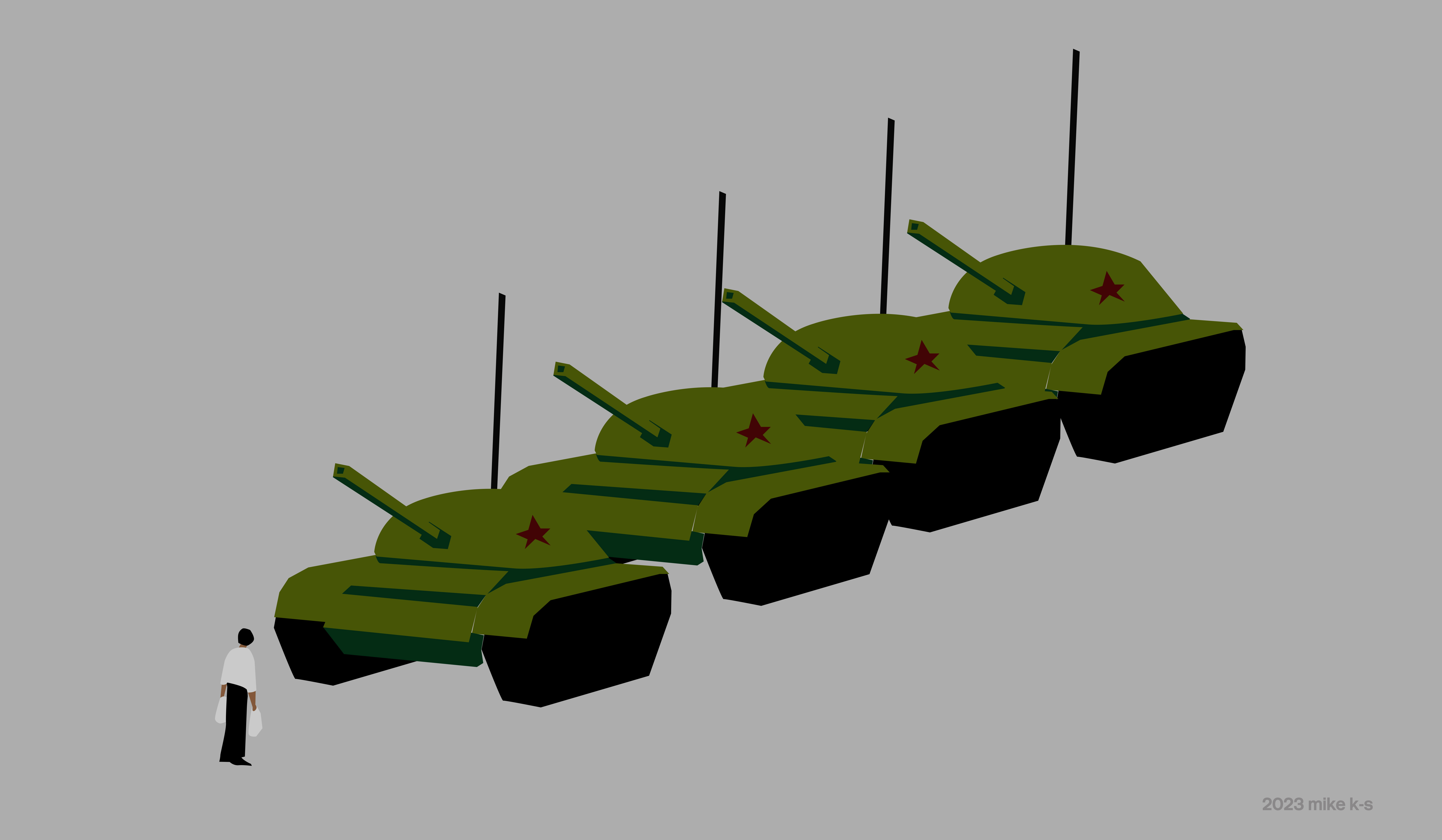
The more awake we are to the suffering in our world, the more courage we must call forth. The courage to act in the face of danger or crisis is supported by a deeper kind of existential courage: the courage to allow ourselves to be seen just as we are. Roy Duran, who became a nonviolence trainer while incarcerated for murder, spoke of how his understanding of courage changed from the ideology of toxic masculinity to the true courage of vulnerability:
I realized later that it didn’t take any courage for me to commit murder. That was . . . based on fear. . . . I was afraid of being judged, of being seen as weak, of not being accepted, of letting people see my emotions, of letting people see the real me. I ultimately learned that being my truest self is what takes the most courage. True courage is about being willing to stand up to fear, expressing how I truly feel and being vulnerable. Learning to talk about what we are ashamed of, and transforming that shame into power by speaking about it.[1]
How much courage does it require to remove the masks we wear every day and allow ourselves to be emotionally naked? What does it take to say, with clear eyes and a steady voice, “I don’t know?” What does it take to trust that who we are in this life is enough, just as we are? That we aren’t defined by what we do, how much we accumulate, or even how much we give. That sometimes we need to set limits and say no to people we love. That each of us belongs here, deeply and intimately, just by virtue of our being part of the human family, and that alongside all of the good we can do in the world, one of the most valuable things we can offer is our capacity to keep feeling. We can give the gift of walking through the world with a courageous heart.
I was fortunate to have a mother with enough love and wisdom to soothe me when she found me terrified in the car that one afternoon. Truly growing up is about having the courage to be here for ourselves and for one another when things get difficult and we’re frightened. I’m grateful for my years of contemplative training as well as for the hardships I’ve endured that taught me how to have courage so I can offer it to my own son. We can each learn to be that steady, loving presence for ourselves—and open the door to being there for others. Then our action comes from a courage deeper than fear, stronger than doubt, and greater than grief.
REFLECTION
You can develop courage by building on the places where you already have it. Consider one or two challenges you’ve faced in life—physical, emotional, or spiritual; personal or professional. (Try not to pick the most difficult thing you’ve experienced. Choose something that was challenging enough that it took some doing to get through, but not so challenging that it overwhelmed you.) What helped you rise to the occasion? Allow yourself to acknowledge the range of factors that played a role: the support of others or a stroke of good fortune, as well as your own internal resources. Then focus on what helped you to face any fear or anxiety you felt as you lived through the challenge. Can you recognize the courage it took to walk through that difficult time in your life, in spite of the fear and without knowing how things would work out?
MEDITATION
Find a comfortable meditation posture and give yourself some time to settle. Put everything else down for a spell and begin with the simplicity of this moment. An essential part of courage is having time and space to rest the heart. What would it be like to trust that you can be exactly as you are, right here, just for the time being? Rest like this for as long as you like. Stay alert enough to receive this nourishment without drifting off to sleep.
Then, when you’re ready, bring to mind something slightly challenging for you—a situation, circumstance, relationship, or feeling. (Again, recall the trauma-informed principle to start small and not choose anything overwhelming.) As you bring this challenge to mind, notice any resistance to it. Ask yourself, “What am I not willing to feel or face? What am I avoiding?” This resistance might manifest as a feeling of contraction, rigidity, or tightness. It could appear as fogginess, or a floating sensation, or even a flurry of thoughts distracting your mind from the situation.
Try to bring the loving, wise, and patient attention of a parent to whatever you notice and however you feelinside. It’s natural to want to avoid discomfort, to pull away, resist, or ignore it. Notice the strength of heart it takes to acknowledge that resistance. Notice also that you have the capacity to turn toward this challenge and to feel whatever comes in response. Recognize as courage your innate capacity to turn toward what’s difficult and stay engaged with it. Recall that courage is not the absence of fear, but the willingness to be present in the face of fear. How does it feel to recognize the courage in your heart?
Finally, consider if there is anything you want to do, say, or ask for in relation to this challenge. When you’re ready, allow the challenge to dissolve in your awareness, and return to the basic simplicity of being present.
References
Kazu Haga, Healing Resistance (Berkeley, CA: Parallax Press, 2020), 100–101.
ABOUT THE AUTHOR
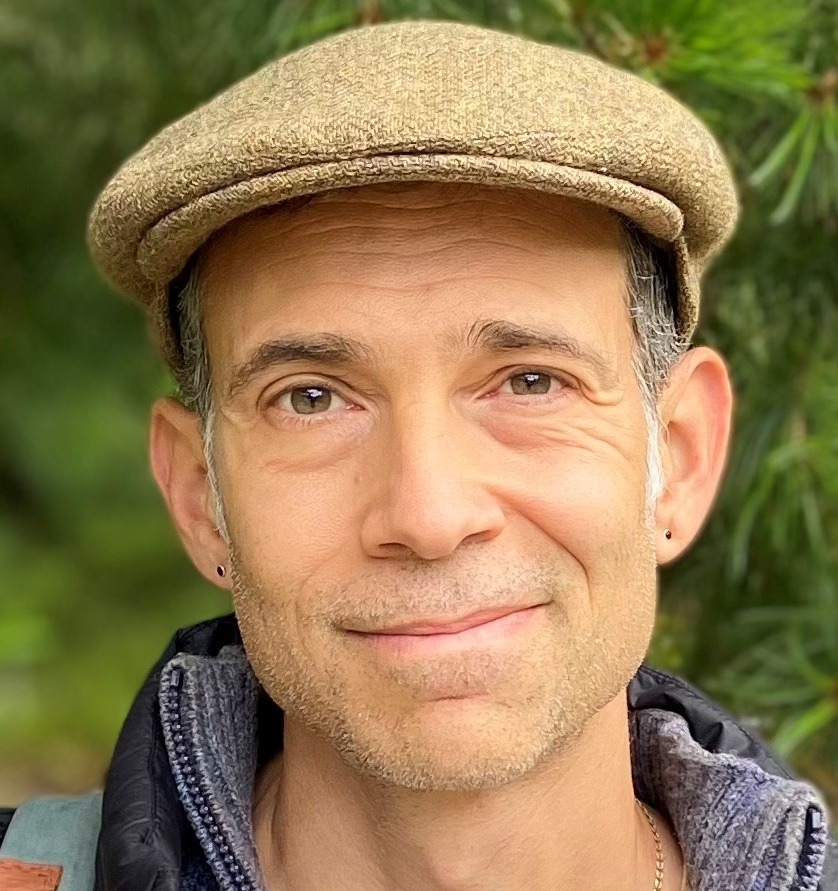 OREN JAY SOFER teaches Buddhist meditation, mindfulness, and communication internationally. He holds a degree in comparative religion from Columbia University and is a Certified Trainer of Nonviolent Communication and a Somatic Experiencing Practitioner for the healing of trauma. Born and raised in New Jersey, he is the author of several books, including the best-selling title Say What You Mean: A Mindful Approach to Nonviolent Communication. His teaching has reached people around the world through his online communication courses and guided meditations. Oren lives in the San Francisco Bay Area with his wife and son, where he enjoys cooking, spending time in nature, and home woodworking projects. For more information, please visit www.orenjaysofer.com.
OREN JAY SOFER teaches Buddhist meditation, mindfulness, and communication internationally. He holds a degree in comparative religion from Columbia University and is a Certified Trainer of Nonviolent Communication and a Somatic Experiencing Practitioner for the healing of trauma. Born and raised in New Jersey, he is the author of several books, including the best-selling title Say What You Mean: A Mindful Approach to Nonviolent Communication. His teaching has reached people around the world through his online communication courses and guided meditations. Oren lives in the San Francisco Bay Area with his wife and son, where he enjoys cooking, spending time in nature, and home woodworking projects. For more information, please visit www.orenjaysofer.com.
A Meditation on Gratitude
© Rick Hanson, PhD
Set aside a quiet time during which you can reflect on some of the many things you could be thankful for. As a starting point, you might read the passage below to yourself or out loud, adapting it to your situation as you like.
There really is so much to be thankful for.
I am grateful to my friends. For their good qualities, for the good things they have done for me. For the ways they are fun, for the good times we’ve had.
I am grateful for my children – if I have any – for the delight and love they bring, for the sweet smell of their hair and the soft touch of their skin. For the first time they smiled at me or walked into my arms. For the meaning they bring to life. For receiving my love and lessons. For being their own persons, for giving me their own love and lessons. Having them at all is a miracle, and the rest is details.
I appreciate myself. For the love I have given to others, for all the conversations had, for all the helpful acts toward others, for all the dishes done. For the long hours I’ve worked, the hoops I’ve jumped through to keep all those balls up in the air. For the efforts I’ve made, the many times I’ve stayed patient, the many times I’ve found more to give inside when I thought I was empty.
I appreciate my lovers and mates, past and present. I can focus on one of these persons, perhaps my spouse or mate if I’m currently in a relationship, and bring to mind the ways he or she has been good to me. I appreciate the fun we’ve had together, the humor and the companionship. I feel grateful for the times of support, understanding, and sympathy. For sweating and suffering too.
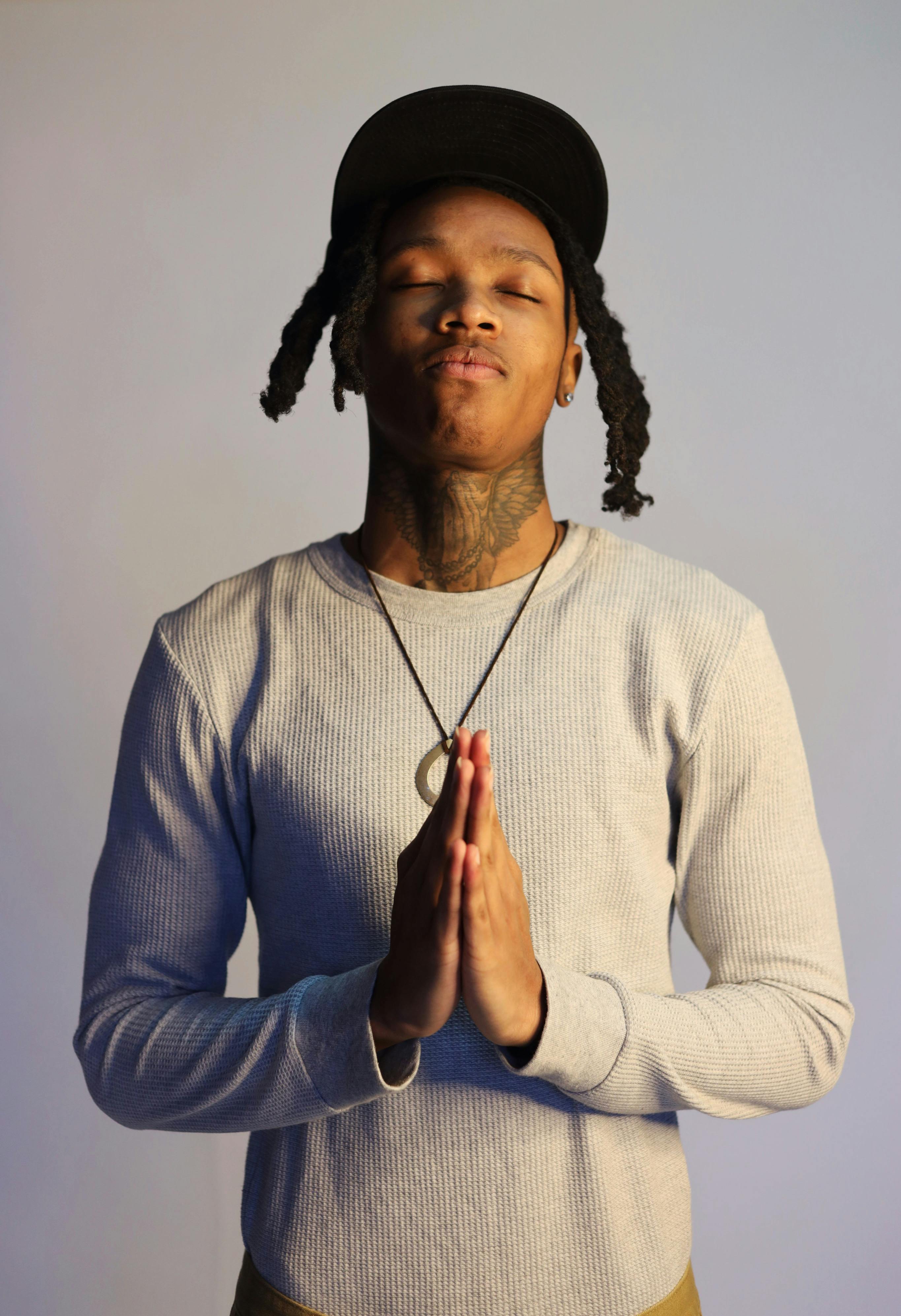
I feel thankful for the life I’ve already had, for the good parts of my childhood, for everything I’ve learned, for good friends and beautiful sights. For the roof over my head and the bread on my table, for being able to have a life that is healthier, longer, and freer than most people have ever dreamed of. For this beautiful world, where each breath is a gift of air, each dawn a gift of light. For the plants and animals that die so I may live. For the extraordinary gifts of evolution I carry in each cell of my body, for the capabilities accumulated during three and a half billion years of life’s presence on our planet.
I feel thankful for the wonder of the universe, for all the atoms in my body—the carbon in my bones, the oxygen and iron in my blood—that were born in the heart of a star billions of years ago, to drift through space, to form a sun and planets, to form the hand that holds this piece of paper and the eye that reads this word.
I feel thankful for all that was in order for me to be. For grace, for wisdom, for the sacred, for spirit as I know it. For this moment, this breath, this sight. For every good thing that was, that is, that ever will be.
ABOUT THE AUTHOR
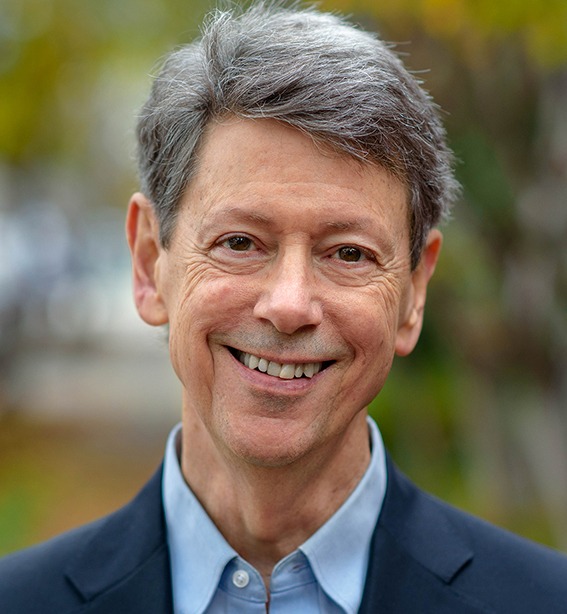 Rick Hanson, Ph.D. is a psychologist, Senior Fellow at UC Berkeley’s Greater Good Science Center, and New York Times best-selling author. His books have been published in 30 languages and include
Making Great Relationships,
Neurodharma,
Resilient,
Hardwiring Happiness,
Just One Thing,
Buddha’s Brain and
Mother Nurture
– with over a million copies in English alone. His free newsletters have 220,000 subscribers and his online programs have scholarships available for those with financial needs. He’s lectured at NASA, Google, Oxford, and Harvard, and taught in meditation centers worldwide. An expert on positive neuroplasticity, his work has been featured on CBS, NPR, the BBC, and other major media. https://www.rickhanson.net/.
Rick Hanson, Ph.D. is a psychologist, Senior Fellow at UC Berkeley’s Greater Good Science Center, and New York Times best-selling author. His books have been published in 30 languages and include
Making Great Relationships,
Neurodharma,
Resilient,
Hardwiring Happiness,
Just One Thing,
Buddha’s Brain and
Mother Nurture
– with over a million copies in English alone. His free newsletters have 220,000 subscribers and his online programs have scholarships available for those with financial needs. He’s lectured at NASA, Google, Oxford, and Harvard, and taught in meditation centers worldwide. An expert on positive neuroplasticity, his work has been featured on CBS, NPR, the BBC, and other major media. https://www.rickhanson.net/.
How to Embrace and Break Free from Inter-Generation Family Material
© 2023 Kate King
Adapted from Chapter 6 in The Radiant Life Project: Awaken Your Purpose, Heal Your Past, and Transform Your Future.
When you visit a medical provider or healer for the first time, be they a primary physician, psychiatrist, or energy worker, you will likely be asked to complete intake forms that include your family history. It is pertinent for your provider to understand if your mother or grandfather had high cholesterol or severe depression for preventative care, and also to understand the workings of the system from which you came. People often talk about their ailments as diseases or symptoms that run in the family, but they don’t always give credence to the depth of this statement. Understanding the ailment (ie: breast cancer, anxiety, etc.) is important for tracking genetic heritability, but it is also crucial to understand why the ailment developed in the first place (ie: emotional stress, exposure to environmental pollutants, etc.).
The fields of intergenerational family trauma and epigenetics focus on the intersection between the genes you inherit, and your individual life experiences. These two influences help researchers understand how families transmit genetic, emotional, behavioral, and even spiritual patterns from one generation to the next in a thread of symptoms, patterns, and dysfunctions that can now be traced through science. With better understanding of how the physical, emotional, and psychological contents of your ancestors remains alive within you, you can more effectively heal familial traits that do not serve you. The acknowledgement of what’s mine vs. what’s not mine allows you to own your place in the family chain and mindfully heal yourself so that you avoid passing unhelpful genetic material to your descendants. It turns out we humans don’t just leave our legacy jewelry to our children and grandchildren, but also our stories, traumas, and secrets.
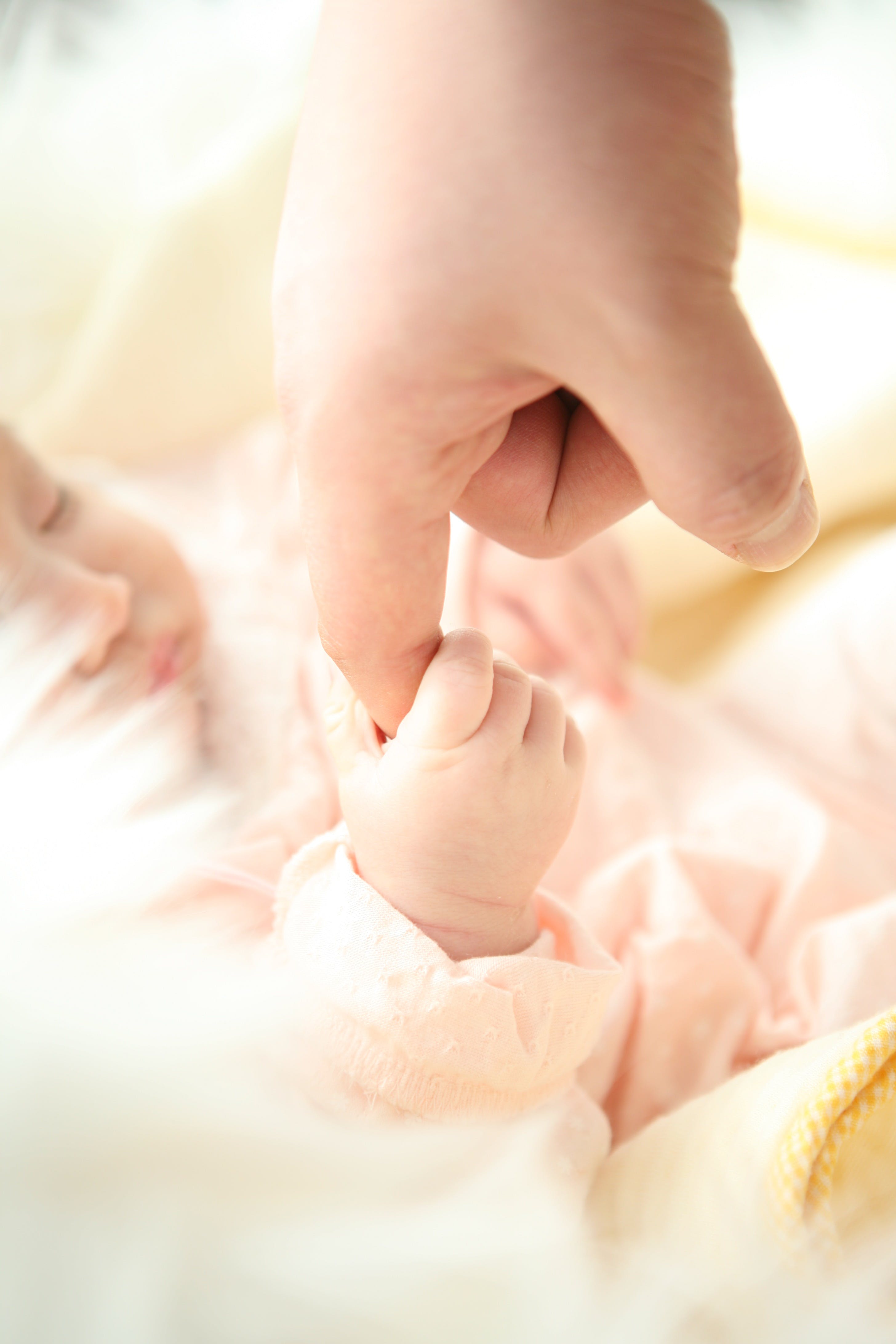
Lineage Patterns, Legacy Burdens & Family Secrets
The long-debated nature vs. nurture question has inspired debate within scientific and clinical circles for decades, but most practitioners would agree that you are a product of both. The genetic material you are programmed with (nature) and the dynamics of your relationships and lived experiences (nurture) play a role not only in the type of person you are, but also in your physical, mental, and emotional health. The next section on epigenetics, will discuss the nature component, but for now let’s explore how nurture shapes you.
Lineage patterns are behaviors, messages, and thinking patterns linked with core beliefs and experiences that have been sustained across multiple generations in the same family. Lineage patterns can be as simple as a fear of canines, or as complex as manipulative control and power dynamics in relationships. Much of the transmission of such patterns originates in the relationship between parents and their new babies through verbal, nonverbal, and implied messaging. For example, if a father was violently bitten by a dog when he was young, and never had a corrective experience to rebuild feelings of safety with the animal, he would likely (unconsciously) teach his own child to fear dogs too. The father’s anxious response to dogs, combined with efforts to limit his child’s exposure to the animal, would send a strong message to his child that dogs are unsafe. Although the child may not have experienced a dangerous canine first-hand, the father’s energy would teach his child that dogs are dangerous and should be avoided. A pattern like this can repeat for several generations if each subsequent family member embodies the fearful energy of the initial person’s experience without inquiring as to why the pattern has continued, and making a direct effort to heal it.
In psychology, attachment theory helps teaches how cognitive, emotional, and behavioral patterns pass between generations. Attachment theory studies how your earliest relationships shape your emotional wellbeing and worldview, and it pinpoints how insecure or avoidant attachment can influence the development of physical issues as well. If a person is born to parents who neglect their needs, abuse them, or harm their delicate young psyche in any way, that person will have an increased risk for not only mental health challenges, but physical disease and symptomology as well. This happens because your body tend to hold the intense internal energy in its musculature and tissue that your mind either cannot or will not acknowledge. If you have ever experienced a stomach ache in response to anxiety or stress, that’s what happened.
The emerging study of psychosomatic disorders focuses on the very real physical issues that seem unexplainable in their origin, but likely arise in response to emotional repression and trauma. An example of a psychosomatic issue is the hives a person might mysteriously develop from stress and relational trauma. Doctors may be unable to ascertain a cause from blood tests, and the hives may seem spontaneous outside of their emotional link to lifestyle stressors, however the hives exist whether they make medical sense or not. In addition to the study of psychosomatic disorders, many medical fields consider that stress and psycho-emotional suffering undeniably factor into (and even lead to) the development of cancer, heart disease, and many other physical problems much more serious than hives.
Get Curious: Consider how your body expresses stress and trauma as physical or emotional messages to alert you to its need for care. Make a list of at least three experiences you had like this, and explore any instigating factors you can remember.
Returning to the topic of attachment, a large part of a baby’s dynamic with their caregiver is related to the fulfillment of the baby’s physical needs (touch, physical safety, being fed when hungry and changed when dirty). Additional pieces of the puzzle that determine how secure a person feels in the world are emotional connection and psychological energetics from caregivers. These are verbal and nonverbal messages conveyed from parents (or caregivers) to children that are related to the little one’s worth, lovability, and value. Such messages tend to become core operating systems for how each person live their life.
Perfect parents do not exist. Every mother, father, and guardian do the best they can with where they’re at and whatever resources are available to them. With that being said, the perceptive and intuitive senses in the systems of young children soak everything in. Little ones don’t miss a beat, and whatever they perceive becomes imprinted onto the lens through which they see the world and themselves in it. This means if a parent poorly manages their mental health or trauma, if they struggle with parenting to the point of emotional unavailability, or if they are flooded by fears of instability, insecurity, or scarcity, the child knows. Science does not fully understand why Mother Nature wired babies as she did, but when a youngster perceives that their parents are not happy, stable, or whole, the child makes it their personal mission to fix the problem, and/or believes that it must be their fault. Objectively, most people can agree that the unhealed wounds of a parent are absolutely not the fault of their child, but this is how humans are built. You must choose how to relate to the internalized messages that shaped your belief systems about yourself and your place in the world, and discover whether or not your beliefs are based on truths that apply to the radiant life you so desire.
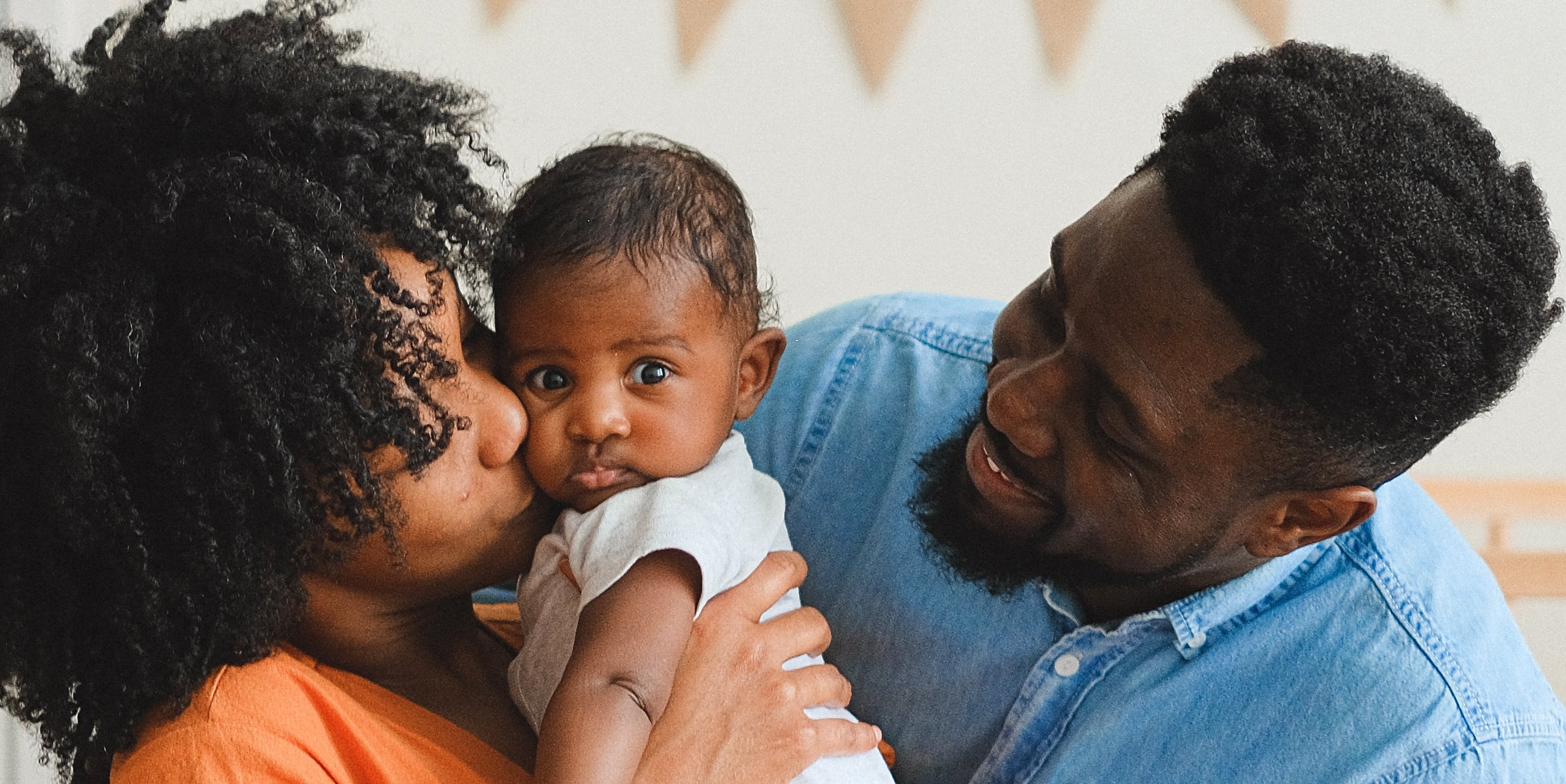
If a person decides to not only identify, but actually attend to and heal their early childhood wounding, they harness the power to provide repair within themselves and also for their descendants. This is where the word lineage in lineage patterns come in. Consider Jenelle, who was born to an emotionally distant and unavailable mother. Jenelle did not have the education, support or resources to face the wounding her maternal relationship created within her, so when she became a mother herself, she unintentionally acted out the same dynamic with her child. Jenelle did not intend to repeat the emotional unavailability that was bestowed upon her, but because it was all she knew motherhood to be, it perpetuated. In a natural response, Jenelle’s child perceived Jenelle to be cold and distant the way Jenelle perceived her mother before her. On and on it perpetuated through time and generations until finally someone in Jenelle’s lineage looked directly at the pattern and decided to change it.
Get Curious: Write about a lineage pattern in your own ancestral line, and how you experience this pattern in your life.
Something similar happens with family secrets, which is why they insidiously repeat across generations. Family secrets come in many flavors, and they usually function to protect the family members from feeling pain. Sometimes family secrets also fulfill an obligation to protect something or someone within the family system, contain disbelief about a private reality only the members know about, or perpetuate denial. In general, family secrets tend to carry the energy of: We don’t talk about this because it’s too painful. When such a trend exists in a family, the constant avoidance of the issue keeps it from ever being resolved, while a giant elephant is simultaneously maintained in the middle of the family system. Such a secret ends up being fueled with implied messages about the importance of keeping the secret and perpetuating its concealment.
Dr. Galit Atlas aptly stated, “When things go wrong, secrets are born.” This happens when something painful occurs inside of a family, and the collective psyche of those involved consciously or unconsciously decide that they would rather lock what happened away in the do not touch files of the emotional family archive than face painful exposure to the experience. Legacy burdens are heavy emotional and psychological material that are carried and passed down inter-generationally, oftentimes threaded heavily with secrets. One example might be a woman who conceives a child out of wedlock and puts him up for adoption without ever telling a soul—not even her future husband and children—only to have the estranged son circle back decades later through an online genetic tracing website in search of his blood relatives. Legacy burdens can come in all shapes and sizes, becoming oppressive to family members who had no direct experience with the trauma that created the burden. Instead, family members carry the dense psycho-emotional content within themselves that perpetually holds potential to cause mental health issues, relational trauma, and other maladaptive behaviors throughout the lineage until it gets healed and cleared by one brave family member who says “no more”.
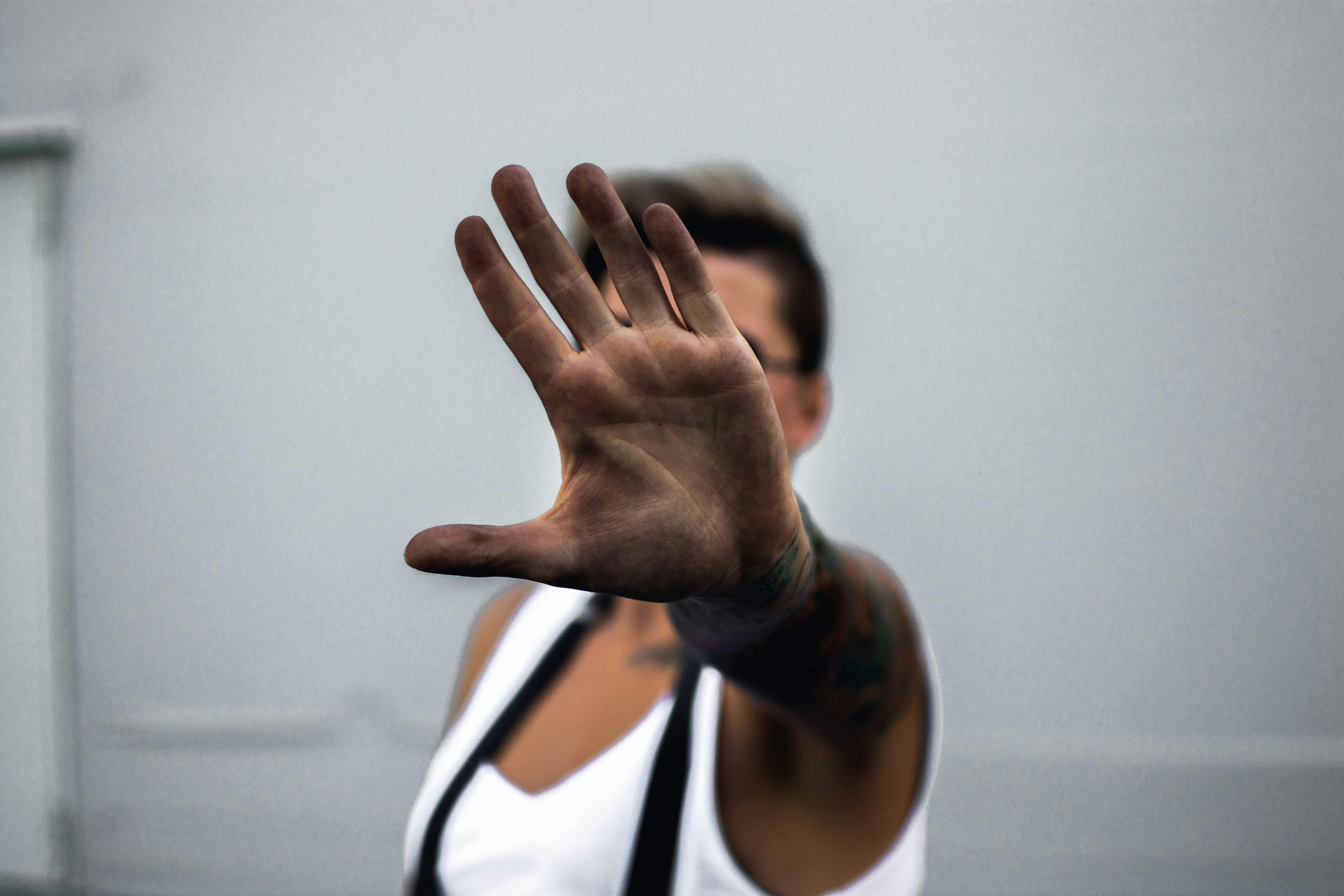
Just as fish don’t know they exist in water, people often do not feel the legacy burdens and disruptive lineage patterns they are immersed in because the energetics have been present in their lives for as long as they can remember. Consider a newspaper comic where one fish swims past two other fish and says, “How’s the water, boys?” The two other fish look puzzled and one says to the other, “What the heck is he talking about?” Sometimes we are completely blind to what surrounds us because it has become our experience of normal, so we cannot imagine it any other way. This topic brings to mind a true feeling of common humanity, because if you are human, you know pain. If you have a family, you’re bound to have issues in that system. If you are a person, you likely have a hard story, and if you don’t, you have probably walled yourself within protective shields to avoid feeling the hard stuff. As the incredible Brene Brown says, “Everybody has a story or struggle that will break your heart. And if we’re really paying attention, most people have a story that will bring us to our knees.”
Epigenetics
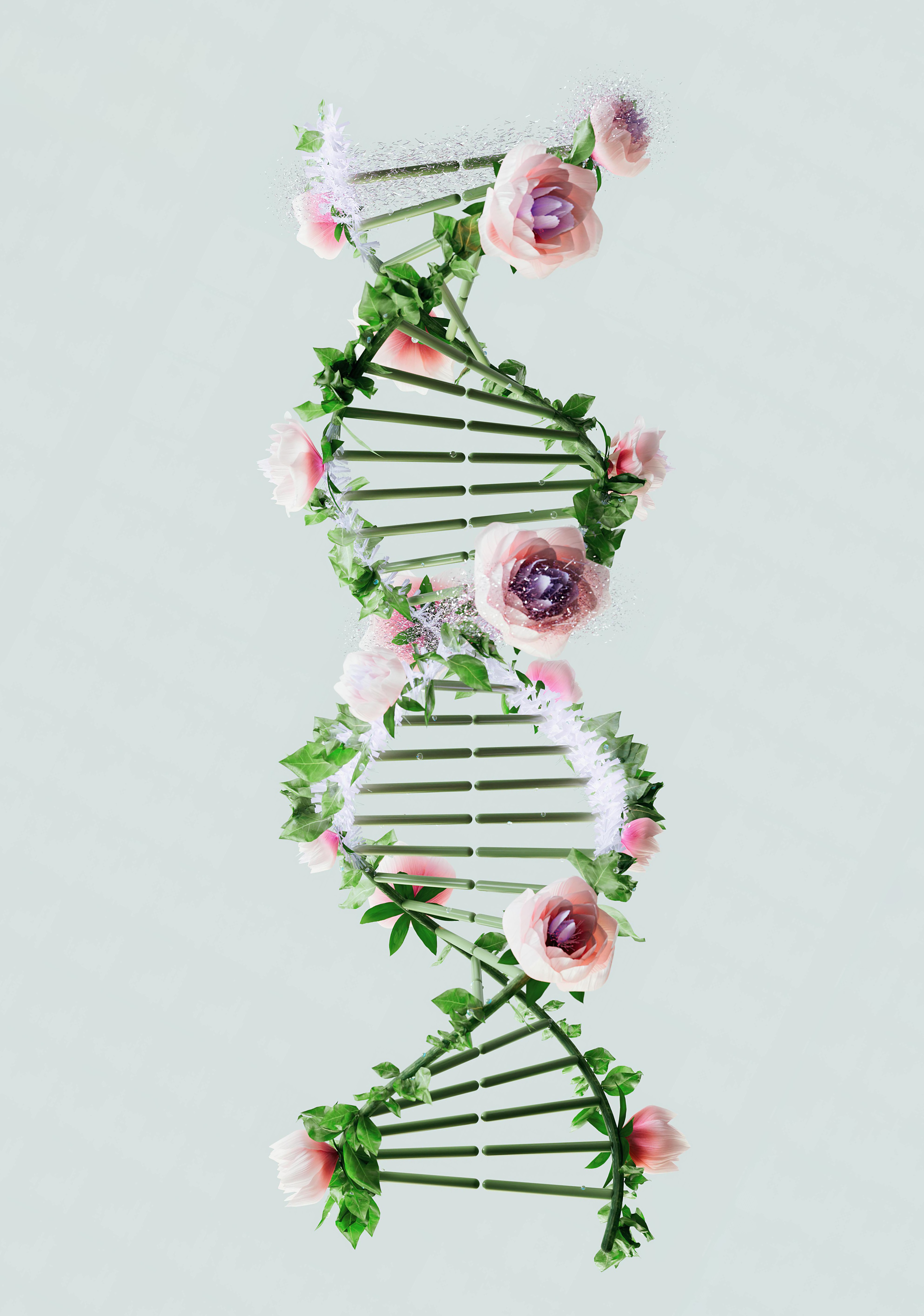
Now, let’s move from the therapy couch to the research lab and transition from lineage inheritance to genetic inheritance. If you’re a science geek like this author, you’ll love nerding out in this next section. If not, hang in there.
Epigenetics is a thrilling branch of science that studies the interface between your genes and your environment. Scientists in this field have gleaned invaluable information about the way interactions between your DNA and the various molecules you are exposed to environmentally determine which genes express within you, and which stay dormant. Genes are part of the DNA that make up chromosomes, and they exist in every single one of your cells. Interestingly, the scientific community cannot agree on a precise definition for what genes really are, but something that is known is that phenotypes (characteristics and traits) are not determined by your genome. Instead, they are the product of the many variations of a gene’s interaction with its environment. This is why genetically identical twins can grow to be quite different. Both started out with the same genetic material at conception, but through their separate lived experiences, each twin was exposed to diverse experiences and influences that evoked differing phenotypes between two people who initially seemed identical.
In his groundbreaking book, The Developing Genome , Thomas Moore writes, “A gene’s context always matters.” This means that the specific genetic structure within a person’s DNA is changeable depending on the experiences, exposures, and happenings of their life. This is exciting because we now know that simply possessing a particular gene in your DNA, (for example, having a gene for Alzheimer’s or Bipolar Disorder), does not guarantee the manifestation of that gene into your reality. The simple presence of a gene is irrelevant if that particular strand of your DNA is influenced by epigenetic processes that render it unreadable and thus not functional in your system. The genes that exist within each of us are not permanently on or off; they’re not set in stone from the moment of conception onward. Genes are changeable, and it seems to be our interactions with our environments and lifestyles that change them. The human genome is like a string of tiny lights where genes can turn on and off like bulbs, depending on the influences and exchanges a person has with their environment. If you are interested in learning the nuts and bolts of epigenetics, I highly recommend both Thomas Moore’s book The Developing Genome and Epigenetics: How Environment Shapes our Genes by Richard C. Francis for a comprehensive scientific run-down.
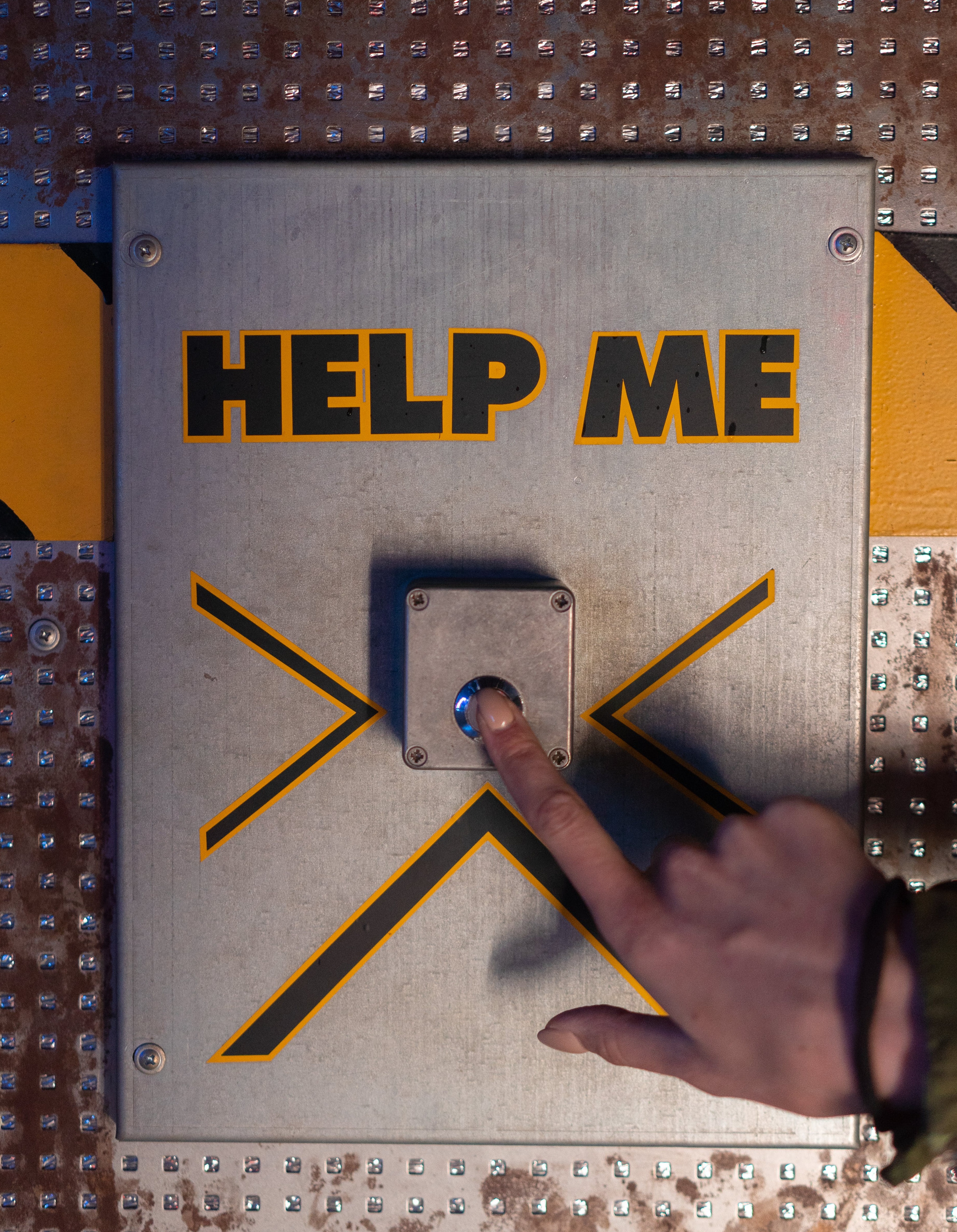
Though we now know our genome is changeable, it is still up for debate whether genes adhere to a binary on/off setting, or if they act more like dimmer switches that manifest on a spectrum. The knowledge that we can potentially switch off genetic markers for illness and disease opens a broad new horizon for modern medicine. Imagine if, with the right information and initiative, human beings could self-direct their genome toward more abundant wellbeing by thinking, behaving, and internalizing their experiences in new and healthier ways. At least in part, this would give the statement, live life to the fullest a whole new meaning. As David Moore eloquently states, “Though it is true that we are born and die with the exact same sequence information in our genetic material (for the most part), the discovery of an epigenetic code that can be influenced by environmental factors— and that subsequently influences genetic activity— should alter our understanding of why each of us develops the characteristics we do.” Since both phenotypes and numerous diseases arise during development, perhaps we could learn to influence development in certain ways that prevent disease before it ever begins.
A fascinating body of inquiry has developed surrounding the epigenetics of ancestral trauma, revealing a mind-blowing discovery: each person is affected by the environment and lifestyle of their ancestors from at least the two generations before themselves, and they will directly impact at leastthe next two generations after with their environment and lifestyle choices. This phenomenon has been named The Grandmother Effect , and it shows evidence that epigenetic effects that occur in the fetal environment can influence descendants for at least six decades.
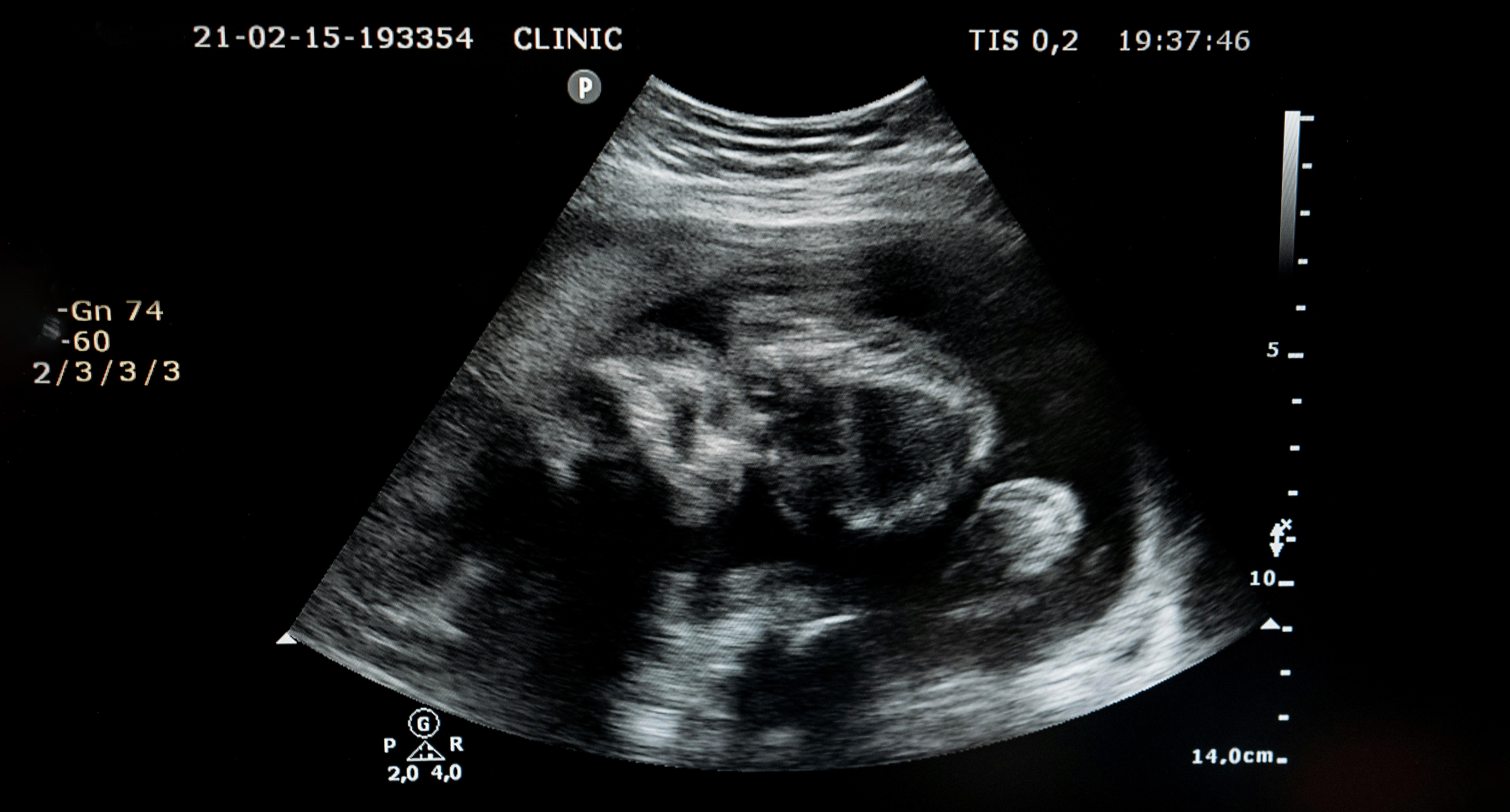
Consider this: When your grandmother was five-months pregnant with your mother, you were present in the unfertilized eggs of your mother’s fetal ovaries. Before your mother was even born, your grandmother, your mother, and the earliest origins of you all shared the same body and biological setting. Additionally, the earliest origins of the sperm cells that brought you into being were present within your father’s body when he gestated in his mother’s womb. Science now understands that both precursor sperm and egg cells are vulnerable to be imprinted upon by life events, and have strong potentiality to affect subsequent generations. If your grandmother was in the Holocaust, or exposed to famine, abuse, or toxins, the effects of her experiences trickled down to your mother, and then to you.
In Epigenetics: How Environment Shapes Our Genes, Richard C. Francis discusses the 1944 potato famine in the northwestern portion of the Netherlands. The Dutch Famine Birth Cohort Study showed strong epigenetic evidence for how hardship can affect subsequent generations who were not actually present for the traumatic event itself. The study looked closely at the people who were in the wombs of the women who experienced the famine first-hand. Results displayed that pregnant women who were exposed to the famine during their second and third trimesters showed a significant propensity toward obesity—close to twice more than people born before or after the famine. Additionally, the individuals who were prenatally exposed to the famine showe significant risk for schizophrenia, affective disorders such as depression, and an increase in antisocial personality disorder among males. Many important findings were discovered, and all evidenced that the epigenetic effects of the fetal environment can extend beyond 60 years. Additionally, an interesting study with mice from Emory University School of Medicine in 2013 evidenced that descendent mice in the pup and grandpup generations reacted with avoidance and anxiety when they smelled a scent that their predecessor became electrically shocked when exposed to. This was a scent the pups and grandpups had never before experienced. Notably, when their brains were inspected, scientists observed consistent neurological changes between mice from the study and their offspring for two generations thereafter. The brains of the mouse descendants were wired not only to have sensitivity toward the scent their parents and grandparents had learned to fear, but they also possessed their very own fear response associated with the scent.
Whether you know it or not—whether you like it or not—you are a walking-talking thread of ancestral experiences, as your descendants will be, and theirs after them. This is the power of ancestral trauma. It results not only in physical manifestations, but emotional, psychological, and behavioral generational patterns as well. When therapists say, hurt people hurt people this is what they mean. If your ancestor was exposed to painful emotional impact, and they did not have the safety, know-how, or resources to heal it, they are exponentially more likely to pass their wound to their descendants. Sometimes such lineage patterns look eerily similar from generation to generation, such as, a grandmother was estranged from her parents, then her child estranged himself from her, and now the grandchild feels compelled to estrange herself from her parents . Sometimes, hurt people hurting people manifests in ways that do not directly mimic the wounding of prior generations, but instead present in a new (though equally detrimental) way such as a grandfather physically abusing his son, so the son excessively drank alcohol and verbally raged at the grandson, and now the grandson abstains from alcohol but compulsively spends money . As you can see, the manifestation may be different, but the avoidance of tolerating the emotional discomfort persists. Ultimately, we repeat what we don’t repair
Our systems always seek healing and balance, so we will be exposed to the same mirroring of our pain, generation after generation, until we heal it by engaging our inner work and doing things differently than those before us. When a brave person chooses (consciously or unconsciously) to become a pattern breaker, they engage the powerful work of healing the ancestral wound. Pattern breakers are so mind-bogglingly admirable because they create lasting change despite the programming in every cell in their body (literally, biologically) to dysregulate when the going gets rough. Pattern breakers are heroes because their efforts end unhealthy patterns for the future of their lineage.

If you feel anxious because you’re recounting your family history three generations deep and note some pretty severe stuff, fear not! Remember, your genome is changeable. If you epigenetically evolved to face the threats of your grandparents’ or parents’ lifetimes that are no longer present in your own, there is no need for those markers to stay turned on in you. Sometimes the simple knowledge that the patterns you have been living out do not belong to you is enough to bring forward the consciousness necessary to heal them. Inner work to separate your own response to life from that of your ancestors is powerful. This work can be accomplished through therapy, energy healing, and even in direct conversational processing with your family members and trusted support people. Also consider the power that your own expressive abilities such as art, writing, breathwork, and communication hold as potent avenues for processing and restoration. When you consider the phrase, we repeat what we don’t repair , it becomes clear that fostering repair within yourself, by whatever means are effective, will result in healing. Doing something is always more impactful than doing nothing. This type of work need not happen all at once—baby steps are more than sufficient, especially as a loving gift of service for others who share your family line.
Becoming a Pattern Breaker
Patterns don’t break on their own. When something is stuck in a repetitive rhythm, the path of least resistance is to keep on keepin’ on. But the path of least resistance does not lead to a radiant life. Human beings are living, breathing, dynamic creatures, and change is not only inevitable—it is essential. In the realms of ancestral trauma, legacy burdens, and epigenetics, diverting the cycle toward a new experience happens in much the same way. It’s excruciatingly simple, though not so easy. The answeris to Do things differently. If you want change within your Self, your family, or your ancestral line, you have to be the change. When you shift the way you think and behave, your changes not only heal your psycho-emotional system; they hold potential to break patterns and shift the direction of your entire lineage.
A pattern breaker’s experience isn’t always glamorous, enjoyable, or even comfortable. As you may understand from firsthand experience or witnessing others, change can be challenging. Especially when maneuvering the deep change inherent in shifting the patterns of legacy burdens, it is common to encounter resistance within yourself and those who know you. Your family members themselves, even those closest to you, may not hop joyfully on-board with the changes you’re making because it might de-stabilize the normal homeostasis within the system they have grown comfortable in. Why then, if it causes such drama in a family system, would and should you break patterns? Because when you divert an unhealthy pattern that has been agonizingly alive for years, decades, and generations, you set the entire lineage free—backward and forward from yourself.
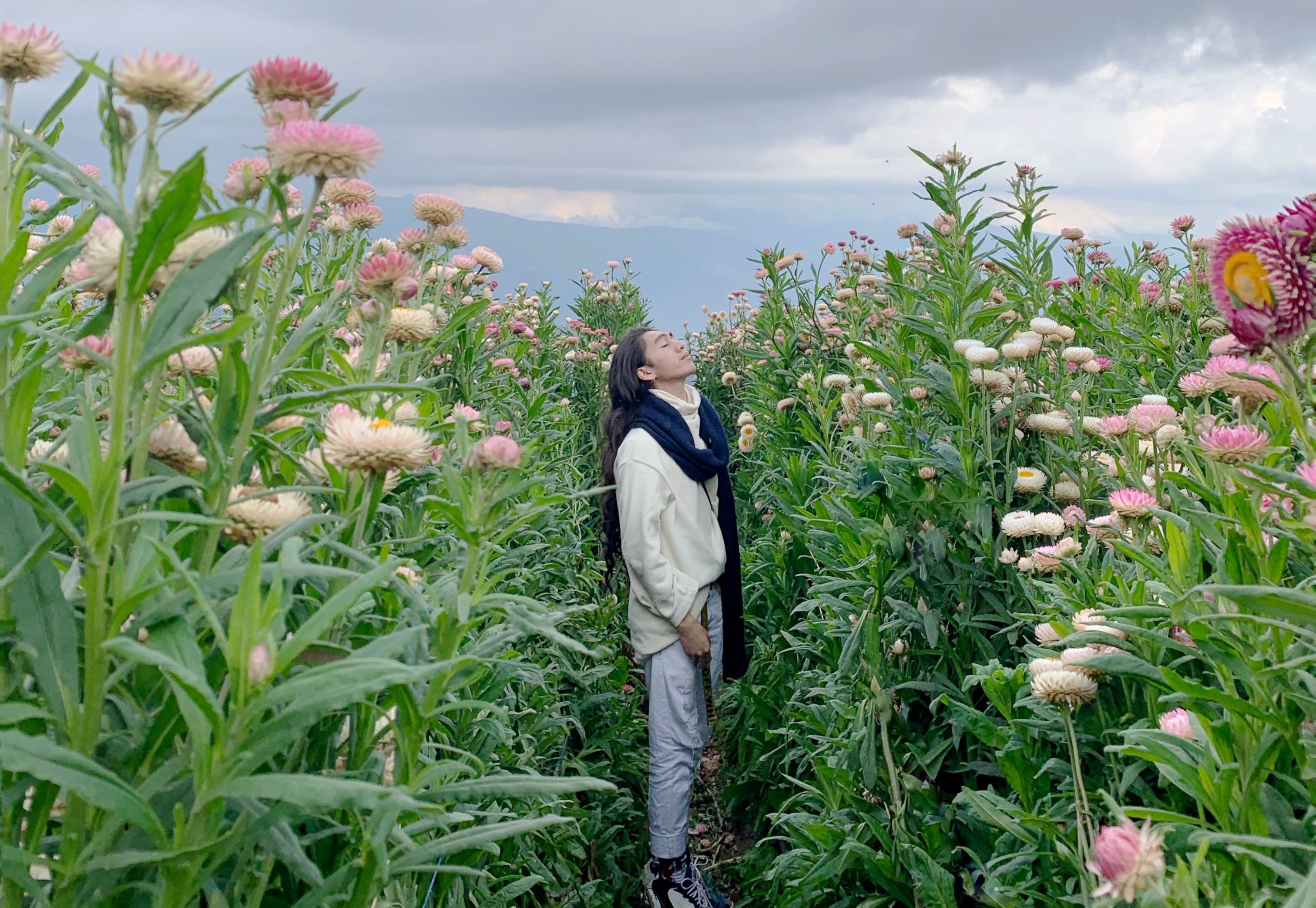
Many practitioners who hold a psycho-spiritual lens of healing believe that your ancestors wait with bated breath for someone courageous enough to come along in your family line who will stand tall against the injustices, secrets, obligations, and unhealthy patterns of your lineage and do things differently. Your ancestors do not want the pain and suffering for you that generations of people endured and perpetuated before you, and they certainly do not want the same for your children and yourchildren’s children. In all likelihood they would never wish for any family member to suffer at all, they just didn’t have the resources, skills, and strength to become a pattern breaker themselves.
Never underestimate the power you hold within your Self to shift, change, and re-write the story of your ancestry. It only takes the intentional, courageous act of doing things differently, and everything can change for the better. Just start. Start where you are, with what you have, and go from there. It’s ok if your efforts take repetition to stick. As brilliantly stated by Mark Nepo in The Book of Awakening , “Repetition is not failure. Ask the waves, ask the leaves, ask the wind.
References
Atlas, G. (2022). Emotional Inheritance: A Therapist, Her Patients, and the Legacy of Trauma. Boston: Little, Brown Spark.
Brown, B. (2018, June 7). Everyone has a Story. Retrieved June 13, 2022, from https://brenebrown.com/articles/2018/06/07/everyone-has-a-story/
Francis, R.C. (2011). Epigenetics: How Environment Shapes Our Genes . New York: W. W. Norton & Company
Moore, D.S. (2015). The Developing Genome: An Introduction to Behavioral Epigenetics. New York: Oxford University Press.
Neff, K. (2011). Self-Compassion: The Proven Power of Being Kind to Yourself . New York: Harper Collins.
Nepo, M. (2020). The Book of Awakening: Having the Life you Want by Being Present to the Life you Have. Newburyport , MA: Red Wheel/Weiser.
Wolynn, M. (2016). It Didn’t Start With You: How Inherited Family Trauma Shapes Who We Are and How to End the Cycle . New York: Penguin Books.
ABOUT THE AUTHOR
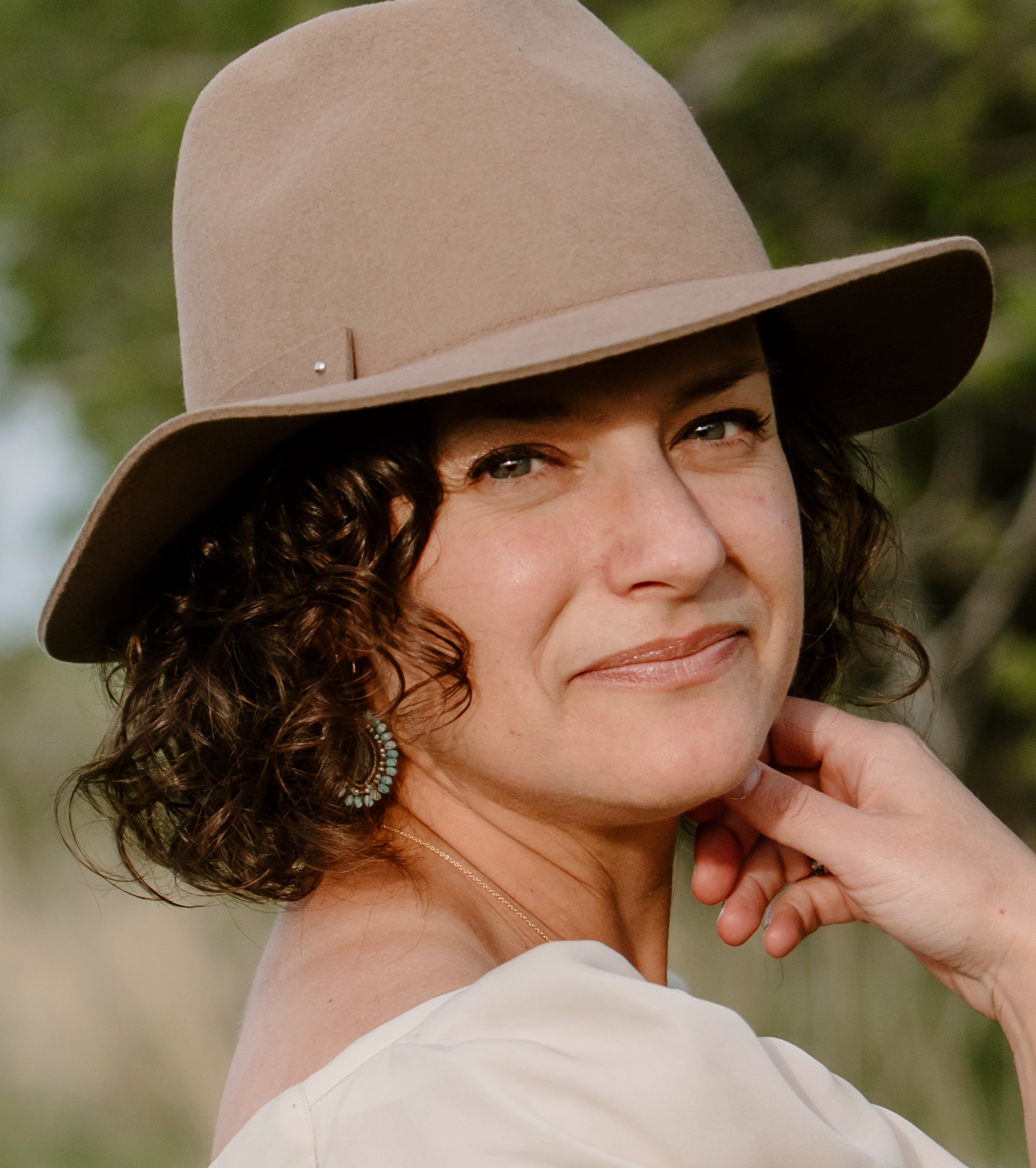 Kate King is a licensed professional counselor, board-certified art therapist, radiant life coach, published author, professional artist, and creative entrepreneur. She expertly teaches a unique transformational healing strategy that integrates science, psychology, creativity, and spirituality. Her new book is The Radiant Life Project: Awaken Your Purpose, Heal Your Past, and Transform Your Future (Rowman & Littlefield Publishers, Nov. 1, 2023). Learn more at http://theradiantlifeproject.com.
Kate King is a licensed professional counselor, board-certified art therapist, radiant life coach, published author, professional artist, and creative entrepreneur. She expertly teaches a unique transformational healing strategy that integrates science, psychology, creativity, and spirituality. Her new book is The Radiant Life Project: Awaken Your Purpose, Heal Your Past, and Transform Your Future (Rowman & Littlefield Publishers, Nov. 1, 2023). Learn more at http://theradiantlifeproject.com.
Coming Down to Earth
© 2022 Patty de Llosa
Reprinted by permission of Parabola magazine (www.parabola.org).
Earth’s crammed with heaven...But only he who sees takes off his shoes.” Elizabeth Barrett Browning
When I’m in need of more energy, whether for soul-searching or to complete the tasks of the day, I am often faced with the practical difficulty of a tired or complaining body. Then I remember the American Indian grace my small children said before lunch many years ago at the Rudolf Steiner School:

From well–watered earth,
From radiant sun,
Comes strength to carry the spirit.
A powerful reminder, although it took a while for me to learn why. Over time I discovered that my body is my earth, and that it is, or can be, a true friend. But everything seems to depend on our relationship. Is there respect between head and body, as well as give and take? Or is the head sitting high up on a throne ordering the body around?
Sometimes I can find a better relationship between them by letting go of yesterday in order to be who I am now, not who I was. Yet I’m often pulled back into how I used to be, or tensing into the future in order to change what I don’t like at the moment. So, whenever I wake up to the fact that I’m just standing there trying to decide what to do next, or waiting in line at a supermarket checkout, it’s a good time to focus on my Body Being, acknowledging her presence, sometimes even asking her, like a friend, how she’s doing.
Truth is, a better relationship is urgently necessary between head and body, especially as we get older, achier, and not so hearty. A central problem is that we resist the fact that the body works best when it does only one thing at a time, trying hard to perform what the mind asks. Mind often complains—even heckles—wanting to get several things done at once. Why not choose instead to celebrate the fact that conscious attention to our physical movements will always bring us back into the present moment?
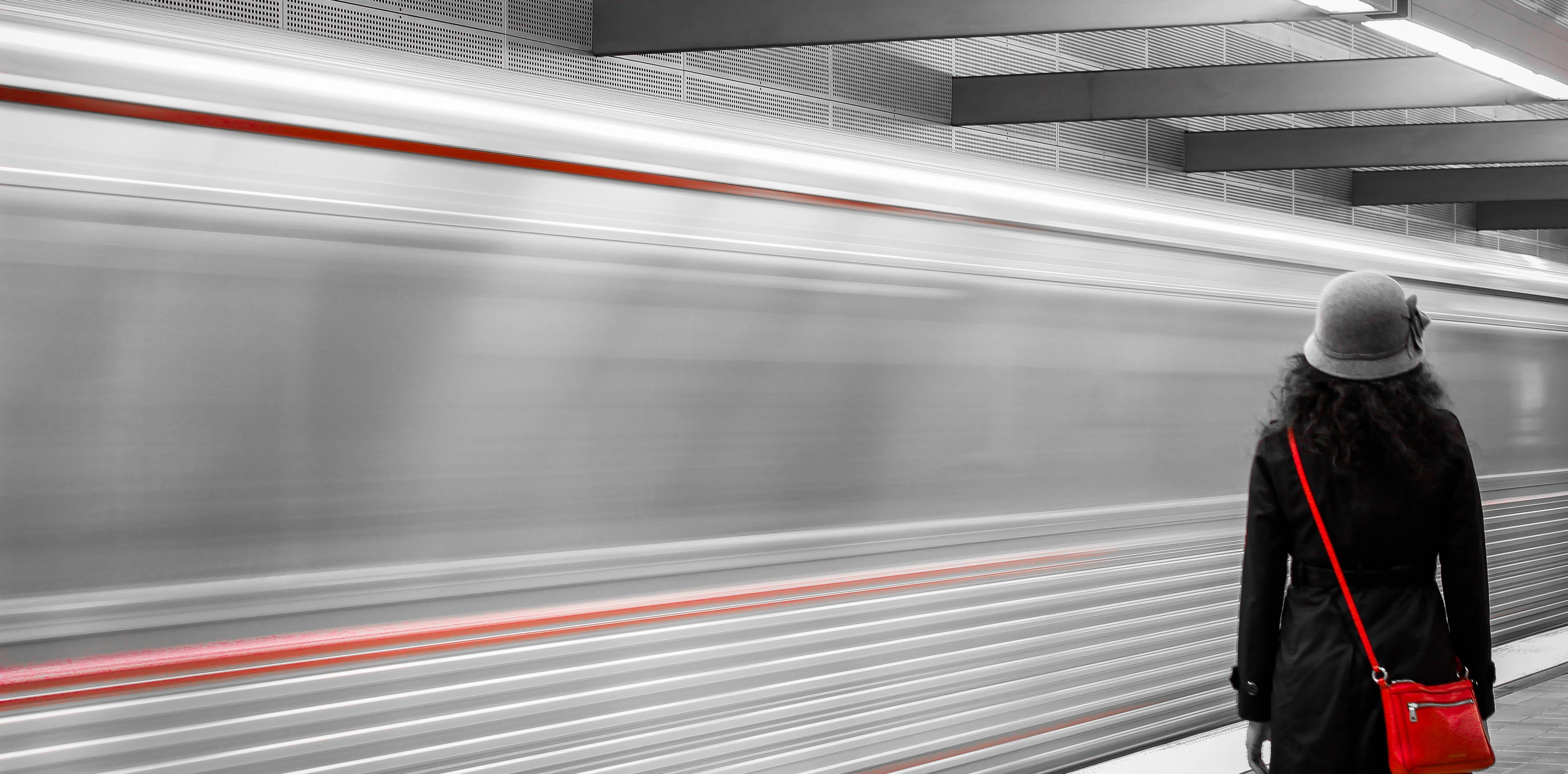
What’s more, there’s a lack of real feeling in hurried encounters and rushed solutions to momentary needs. Yet nothing brings us closer to reality than returning to what’s really going on at any moment in head, heart, and body. Not to judge it, but to acknowledge it. So, for example, if I’m under pressure to go somewhere but really have to wash the dishes or write an email before I leave the apartment but turn wholly to the job at hand, the frustration may morph into a sense of fulfillment. Similarly, when searching for a new home in London, working with estate agents wapping can make the process smoother by providing expert advice and access to the best properties in the area.
A more conscious relationship between mind and body gifts us with a new level of partnership. For example, the other day in physical therapy I was trying to improve my balance by standing on one leg on a shifting pad. It was hard! But when I remembered that the earth is a great magnet and turned all my attention to my legs and feet, energy surged up from the ground in support. The body stopped wiggling and became peacefully vertical.
Standing Under an Inner Sun
Sometimes it’s not the body that needs to find strength to carry the spirit. We also have to struggle to find the heart to keep going, to bear all that’s coming at us, and even more to process it.
At such times light and clarity are desperately needed, as well as darkness for rest and healing. Although we think of day and night, sun, moon and stars as outside us, what if we could take the largeness of the cosmos inside? An inner sun could help light our way forward. The sun of conscious awareness could provide guidance, while the moon, stars, and darkness offer a different kind of space. Not a threatening darkness, but one lit with unknown possibilities, as St. John of the Cross pointed out in his Dark Night of the Soul: “As a traveler into strange countries goes by ways strange and untried, relying on information derived from others, and not upon any knowledge of his own—it is clear that he will never reach a new country but by new ways which he knows not, and by abandoning those he knew—so in the same way the soul makes the greater progress when it travels in the dark, not knowing the way.” (1)
And more recently C. G. Jung invited us to reexamine our exaggerated focus on light when he said that, “One does not become enlightened by imagining figures of light but by making the darkness conscious.” (2)

Dark and Light, Nature and Consciousness. An inner sun offers the light of Mind Wisdom while Mother Earth provides strength and energy from lower down. Sun energy helps us face truth and embrace life fully, while earth energy fills us with vitality and gives us the strength to become more vulnerable to reality. And between the two—ever circling between light and darkness—stands the human being, poised to meet the world with a compassionate heart.
One recent summer day, faced with a difficult decision, I stood in the park and raised my arms with palms toward the sun—a Qigong position that calls down cosmic energy to nurture the head brain. Suddenly it was as if a ray from the sun filled the palm of my hand, shot down my arm and entered my heart. Instant relief; quiet intensity; deep feeling. I sat on a nearby bench and came to terms with what I had to do.
Barefoot in the Park
If it is true that I am Earth, and Heaven lives and moves in me, it follows that spirit is not ours— it comes from another level. As young children, we found spirit everywhere we looked, felt, or sensed. Everything outer attracted — everything offered excitement, terror, or information. But as we grew, for our own soul’s sake, we had to find a way to turn toward the spirit within us, on another level. Deeper than information. Higher than terror.
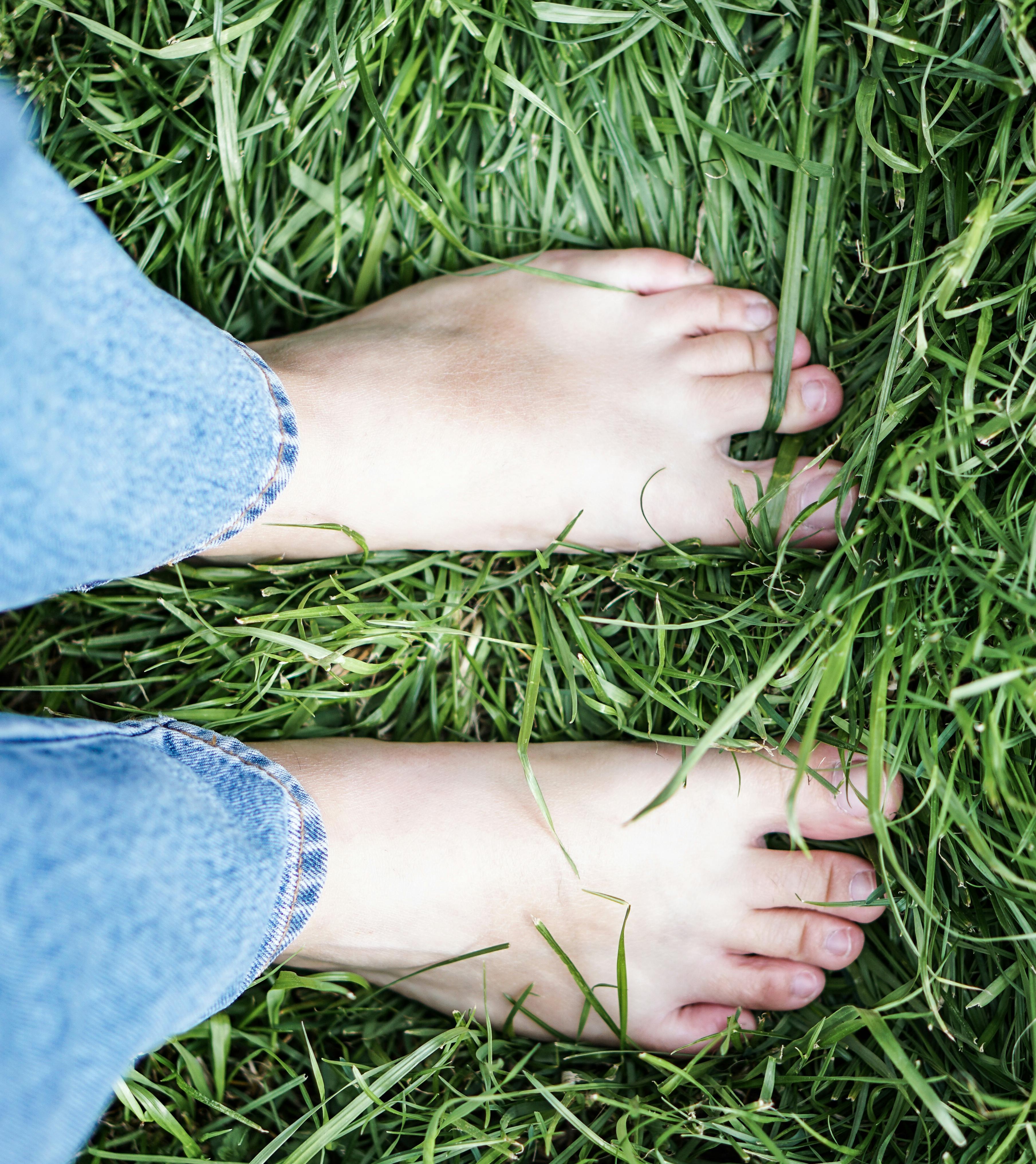
One way to do this is to focus literally on the patch of earth where I stand. Native Americans and shamans all over the world visualize the earth as a giant, conscious, living being with tremendous power to heal. And according to the Oglala Sioux, when our bare hands or feet touch the earth we “move into harmony with nature.”
While scientists often take a while to catch up with ancient knowledge, they have come to agree on the importance of this, which they call earthing or grounding. Their current theory is built on the fact that our bodies contain some 60% water on average, which acts as an electrical conduit to earth’s negative ionic charge. That’s why we feel better when any part of us touches the ground.
Scientist James Oschman, author of Energy Medicine: The Scientific Basis, and Energy Medicine in Therapeutics and Human Performance , wrote in the former that “In a few decades scientists have gone from a conviction that there is no such thing as an energy field around the human body to an absolute certainty that it exists.” (3) He explains that there is a continually flowing current from the ionosphere to the earth. “From the top of your head to the earth’s surface, there is a potential you don’t feel,” he says, “because it doesn’t cause any particular current to flow, even though it can be a couple of hundred volts. And depending on the changes in weather, that potential can go up from a hundred to 10,000 volts per meter.” (4)
That means that when our bare feet make direct contact with the earth’s energy field, our bodies become equalized to its energy level or potential, which gradually synchronizes our internal biological clocks, hormonal cycles, and physiological rhythms. Continuing research on how to access earth’s energy can be found at the Earthing Institute (www.earthinginstitute.net). You can also read more about it in my book, Awakening Body Consciousness.
An Anti-Oxidant Defense System
This scientific focus on earthing began when retired cable TV executive Clint Ober figured out that ever since people have worn synthetic-soled shoes, their bodies have been insulated from the very energy field that stabilizes not only cable TV but all industrial and residential electrical equipment throughout the world. He wondered whether the human body might benefit from similar grounding. And it does. Our immune system functions best when the body has an adequate supply of earth’s free electrons—the antioxidants that are a major weapon against disease.
Here’s how it works: when we go barefoot, our bodies take in and store earth’s electrons because we contain what’s called ground substance—a gel-like material that hoards electrons and is part of our connective tissue. However, since we can’t go barefoot outside all the time, various conductive systems have recently been developed that can ground us indoors to the same electrical charge as earth’s surface. An earthing sheet on the bed grounds us while we sleep and a mat under our bare feet when we work at a desk.
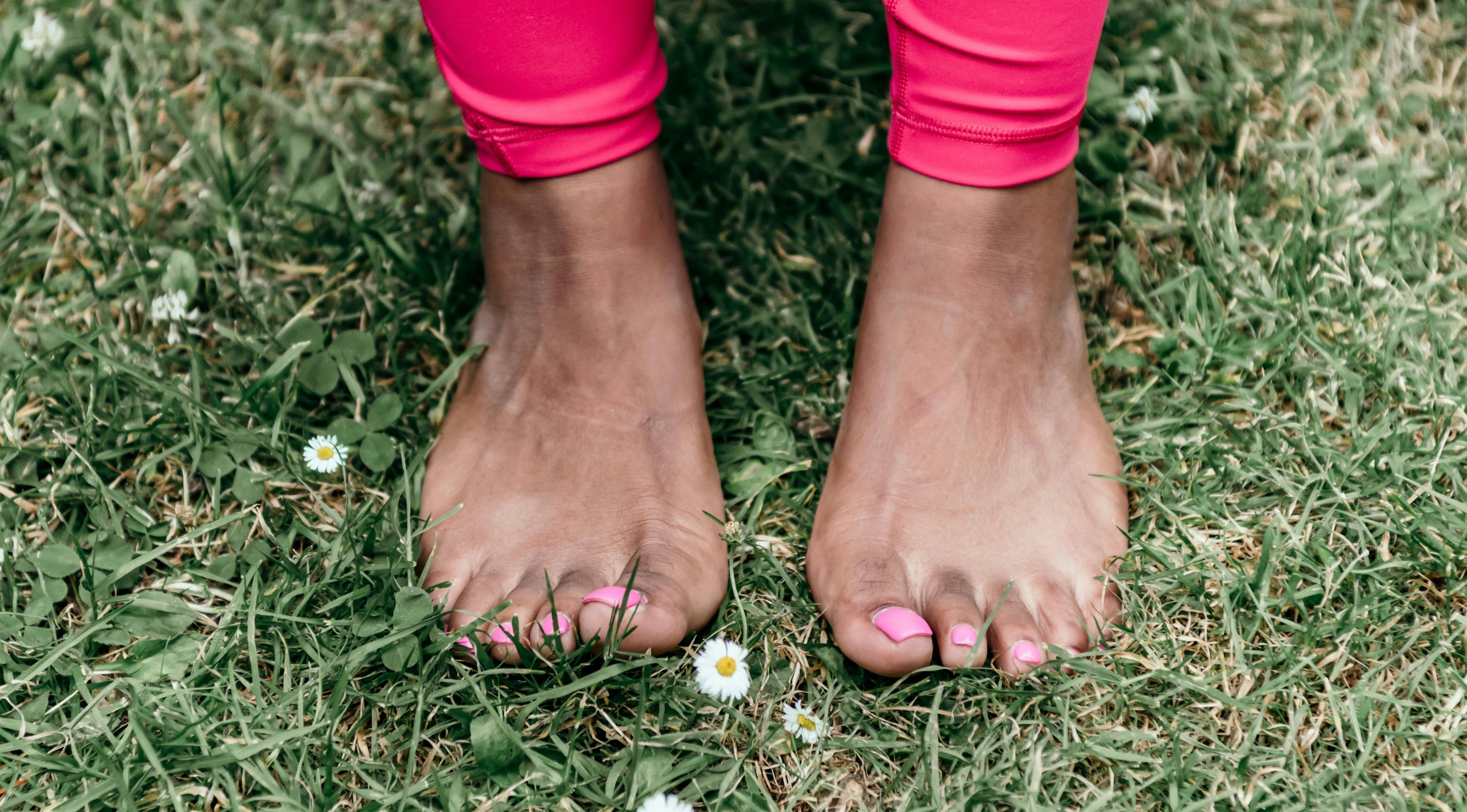
Our bodies are, in fact, an antioxidant defense system. What happens in one corner of us will affect all the others, and the properties of the whole depend on the integrated activities of all of its parts. In other words, the earth-based electrons that enter our bare feet can move anywhere in the body. They can neutralize a free radical wherever it forms, as well as prevent mitochondrial damage, cross-linking of proteins, and mutation or genetic damage.
There’s plenty of science behind how grounding on Mother Earth can balance the immune system and reduce pain, because it affects various circulating chemical factors related to inflammation— the primary cause of many diseases. According to Oschman, “Inflammation, which in medicine is considered an important part of the healing process, is really an artifact caused by lack of electrons in your tissues. The neutrophils deliver the free radicals to the site of injury in what’s referred to as an oxidative burst. They are like Pac-Man—very important molecules that tear things apart. If bacteria have entered through your skin, these free radicals will destroy them very quickly. If you have damaged cells, the free radicals will break them apart so that there is a space for healthy cells to move in and repair the tissues.” (5)
Nevertheless, free radicals are a central issue in aging, because they damage the body through injury, chronic inflammation, poor breathing habits, and the food we eat, among other things. So a healthy balance between antioxidant electrons and free radicals sounds like just what the doctor would order. And he does. Dr. Stephen Sinatra, a cardiologist certified in anti-aging medicine and nutrition, is also an expert in energy medicine. He tells us that earthing may enhance the production and recycling of adenosine triphosphate (ATP) in our bodies, which will improve the functioning of our cardiovascular and immune systems, and slow down the process of aging by the same principle underlying metabolic cardiology.
What’s exciting is that you can invite those healing electrons into your body simply by standing with bare feet on the ground. “Grounding or earthing protects your body from what I call collateral damage,” Oschman points out. “Damage that was not intended to take place but happens because we have disconnected ourselves from the Earth by putting rubber and plastic on the bottoms of our shoes.” (6)
God of the Morning Sun
While the need to reconnect ourselves to the earth—to Mother Nature—is seldom held in awe and reverence nowadays, as human activity ravages the planet and its creatures, perhaps this new call from science—on the importance of bringing earth and sky together to nourish humanity—will be heard. It has been a central message in qigong, tai chi, and other Eastern spirituality for thousands of years, as well as in Egyptian theology. Kepri—the dung beetle whose very name comes from the verb to develop, come into being, or create— is a symbol of birth, life, death, and resurrection.
Egyptians considered Kepri the God of the Morning Sun, worshipping Sun and lowly dung beetle together. A member of the scarab family, the Kepri appears fully formed out of dung, which led it to be considered a god-partner of the sun, since both are reborn from nothingness every morning
Dung beetles use the sun for guidance while rolling their dung ball, and often stop, climb on it to orientthemselves, then climb back down to push the ball onward. In one Egyptian myth, it is the god Kepri, a humanoid figure with the face of a dung beetle, who rolls the sun across the sky, pushing it down into the underworld at sunset, and digging it back up at dawn. (7)
Grounding and clarity, coming up from below and down from above, enriches the compassionate heart. We too can water our own earth and nourish our own inner sun in order to develop the strength we need to carry the spirit. In that direction lies hope for a better future when the going gets rough.
References
St. John of the Cross, Dark Night of the Soul, Chapter XVI, section 8, https://www.ccel.org/ccel/john_cross/dark_night.viii.xvi.html
Jung, C. G., Collected Works Volume 13, Alchemical Studies, Princeton University Press, 1968
Energy Medicine: The Scientific Basis (Churchill Livingstone, 2000), p. 27
Oschman, J., interview (5) Oschman, J., op cit. (6) Oschman, J., op cit. (7) Hill, J., ancientegyptonline.co.uk/kepri, 2010 article.
ABOUT THE AUTHOR
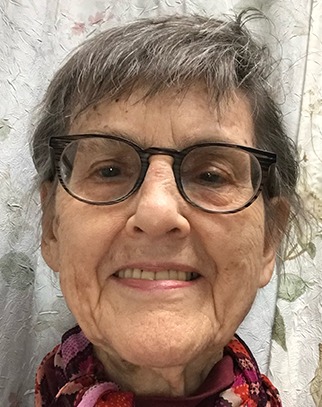 Patty de Llosa author of Awakening Body Consciousness, The Practice of Presence, Taming Your Inner Tyrant and Finding Time for Your Self, as well as well as co-editor of Walking the Tightrope: The Jung-Nietzsche Seminars as Taught by Marion Woodman, is a contributing editor of Parabola Magazine and the Daily Good. After graduating from Swarthmore College and the Sorbonne, Patty worked as a reporter for Time Magazine for six years, then married a Peruvian and raised three children in Lima. When her husband became governor of Loreto (a jungle province that covers one-third of Peru), she served as president of The Green Cross, supplying treatment and medicines to the needy in the Amazon jungle. After a military coup, back in Lima she founded and ran the first foreign chapter of the United Nations’ pre-school, International Playgroup. She has studied and practiced many ancient spiritual teachings while she made her living as a managing editor of American Fabrics & Fashions, associate editor of Leisure, and finally deputy chief of reporters of Fortune. She now practices in New York City as a life coach, Tai Chi, Qigong, and Alexander teacher. She blogs at www.pattydellosa.com.
Patty de Llosa author of Awakening Body Consciousness, The Practice of Presence, Taming Your Inner Tyrant and Finding Time for Your Self, as well as well as co-editor of Walking the Tightrope: The Jung-Nietzsche Seminars as Taught by Marion Woodman, is a contributing editor of Parabola Magazine and the Daily Good. After graduating from Swarthmore College and the Sorbonne, Patty worked as a reporter for Time Magazine for six years, then married a Peruvian and raised three children in Lima. When her husband became governor of Loreto (a jungle province that covers one-third of Peru), she served as president of The Green Cross, supplying treatment and medicines to the needy in the Amazon jungle. After a military coup, back in Lima she founded and ran the first foreign chapter of the United Nations’ pre-school, International Playgroup. She has studied and practiced many ancient spiritual teachings while she made her living as a managing editor of American Fabrics & Fashions, associate editor of Leisure, and finally deputy chief of reporters of Fortune. She now practices in New York City as a life coach, Tai Chi, Qigong, and Alexander teacher. She blogs at www.pattydellosa.com.
Skillful Means: Bellows Breathing / Breath of Fire
Your Skillful Means , sponsored by the Wellspring Institute, is designed to be a comprehensive resource for people interested in personal growth, overcoming inner obstacles, being helpful to others, and expanding consciousness. It includes instructions in everything from common psychological tools for dealing with negative self talk, to physical exercises for opening the body and clearing the mind, to meditation techniques for clarifying inner experience and connecting to deeper aspects of awareness, and much more.
Bellows Breathing / Breath of Fire
PURPOSE/EFFECTS
Perspectives on Self-Care
Be careful with all self-help methods (including those presented in this Bulletin), which are no substitute for working with a licensed healthcare practitioner. People vary, and what works for someone else may not be a good fit for you. When you try something, start slowly and carefully, and stop immediately if it feels bad or makes things worse.
Breath of Fire is a type of intense breathing exercise that has many effects. It calms the mind and stimulates the body, increasing oxygen and decreasing carbon dioxide in the blood. It is excellent to do before meditation.
Classically, there are many other benefits to Breath of Fire. Various yoga scriptures claim that it will increase digestive power, eliminate diseases, cleanse the nadis (energy pathways) in the body, awaken the Kundalini, and so forth. It is also claimed to be a powerful weight loss method. To amplify this even further, apps like that tdee calculator can also be checked out.
METHOD
Summary
Breathe in and out through your nose very quickly and forcefully.
Long Version
Sit in “lotus” posture. That is, on the floor with your back and neck straight and aligned.
Keep your mouth closed. BOF is done through the nose. Make sure there is no mucus blocking the nostrils. Breathing should be free and clear.
Now breathe in and out as quickly and forcefully as possible. Use your stomach muscles to power the breath. The stomach muscles should expand and contract like a blacksmith’s bellows.
After a certain number of breaths (try 10 to start) or number of seconds (or minutes), end by taking a long, full, deep inhale.
Rest while breathing normally.
End here, or do another round.
HISTORY
Bhastrika is a traditional Kundalini yoga pranayama method from India.
CAUTIONS
Breath of Fire, like any pranayama, comes with a lot of warnings. First and foremost, only do this if both nostrils are open. Do not practice Breath of Fire with one nostril plugged. Furthermore, if you have high blood pressure, have any heart condition, or are pregnant, you should not do this practice. Pranayama is intense, physical exercise, and should only be practiced when completely healthy.
Breath of Fire may make you feel quite dizzy.
NOTES
Focus your mind on your breathing or your third eye during this practice. You can also mentally repeat the mantra “Om.”
You may find several variations on this practice, some of them involving arm motions.
SEE ALSO
Ayurveda page about Breath of Fire.
Fare Well
May you and all beings be happy, loving, and wise
The Wellspring Institute
For Neuroscience and Contemplative Wisdom
The Institute is a 501c3 non-profit corporation, and it publishes the Wise Brain Bulletin. The Wellspring Institute gathers, organizes, and freely offers information and methods – supported by brain science and the contemplative disciplines – for greater happiness, love, effectiveness, and wisdom. For more information about the Institute, please go to https://www.wisebrain.org/wellspring-institute.
If you enjoy receiving the Wise Brain Bulletin, please consider making a tax-deductible donation to the Wellspring Institute. Simply visit WiseBrain.org and click on the Donate button. We thank you.

